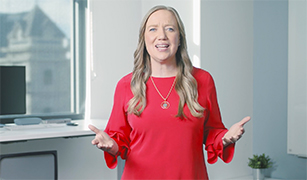Talking about physical space might feel quaint after years of obsessing over virtual training. But when you’re face to face with learners, how you use the room can make all the difference. Here are a few quick tips that have helped me, and I invite you to share what has worked for you in the comments!
Break the Plane (Doug Lemov)
In his book Teach Like a Champion, Doug Lemov shares recommendations for using the physical space of the classroom. While his book centers on K–12 classrooms, I have found so much of what he shares applicable for adult learners as well.
For example, take a quick moment and imagine a classroom. Where is the screen or whiteboard? Probably at “the front.” Where are the students? Likely arrayed in rows or pods or tables oriented toward “the front.” And where is the instructor, teacher, or facilitator? Likely standing at “the front,” looking out at all the students. Lemov describes it as a “plane” between students and teacher.
According to Lemov, more effective teachers break the plane more often—moving around the room, in-between the students, through all the space. I’ve found the same in training adults: the more you move into your learners’ space, the stronger the connection and engagement.
Move Toward Distraction (Mary Moss)
Full disclosure: Mary Moss is my mom, and she’s taught high school for thirty-five years. When I first started training twenty years ago, I asked her for some advice on classroom management. This tip has proved invaluable more times than I can count.
When learners are distracted with side conversations, on their phones, staring off into space, etc., recapture their attention by casually moving toward them as you talk, even coming to stand next to them or behind them. This tends to capture their attention—either because of the physical presence of someone newly next to them or because suddenly everyone else is looking at them (as the other class members have watched you as you have walked and talked). It doesn’t work every time (some people will keep having their side conversation even as you stand right next to them), but it works often and is a low-key, low-stakes way to re-engage someone’s attention.
Walk Away to Widen the Conversation (Mary Moss)
This is another gem from my mom and is the flipside of walking away. For this one, imagine you have broken the plane. You are standing next to a table group. Someone near you begins to make a comment or ask a question. This is an opportunity to slowly walk away from the speaker while still engaging with them (e.g., looking back, doing a sidestep walk away, etc.). This prevents the exchange from “just the two of us” and invites the whole group in. It also has the side benefit of subconsciously prompting the person speaking to speak more loudly, enabling everyone in the class to hear the comment or question.
Down on One Knee (Al Switzler)
The last one is from my mentor (and cowboy poet!) Al Switzler. To foster connection with learners, especially during small group or table discussions, move over to them, pull up a chair, or go down on one knee and invite yourself into that conversation to listen—not to talk, but to listen. Whenever I am tempted to check my phone (and get a quick dopamine hit) when learners are working together on an activity, I remember Al and find a table group to join, sometimes even down on one knee.
One Last Note
The suggestions I have given here are not options for all facilitators due to space constraints or differing abilities. I readily acknowledge that. I’ve tried to include the principle behind the action in hopes that all of us can think about the “why” and consider how you might accomplish those whys in whatever space or circumstances you find yourself in.
What works for you in your classroom? Please comment below! I want to hear the wisdom of the crowd.










The discussion strategies in that support civil discourse in classrooms are effective and important, especially if we want to teach students how to talk about tough issues in society. Two books I like are Civil Discourse by Joe Schmidt and Nichelle Pinkney, and Controversy in the Classroom by Diana Hess.
Over my 30m years as an educator and trainer, I’ve used each of these strategies. Decades ago, we talked about “flipped classrooms,” where learners are empowered to lead and engage. Activating background knowledge early in the lesson was one way that I empowered learners and flipped the classroom.
Good practical suggestions. I am continually working on eye contact with the audience as I have a tendency to look over them. Thank you!
When we facilitate a workshop, we select places that provide ‘extra room’ outside of our classroom. Maybe it’s a large foyer area, a few small conferences rooms, an unused office, or even a lounge space. This allows the learners to move to a space that they may feel even more safe discussing their starter conversations with their learning partners. It also allows them to move around a little.
I also try to situate participants’ tables so they can see others’ eyes. Eye contact lends to higher interaction and added trust.
It’s about a taboo word – TRUST –
And how to establish this
Reference Stephen Covey
And Patrick Lencioni